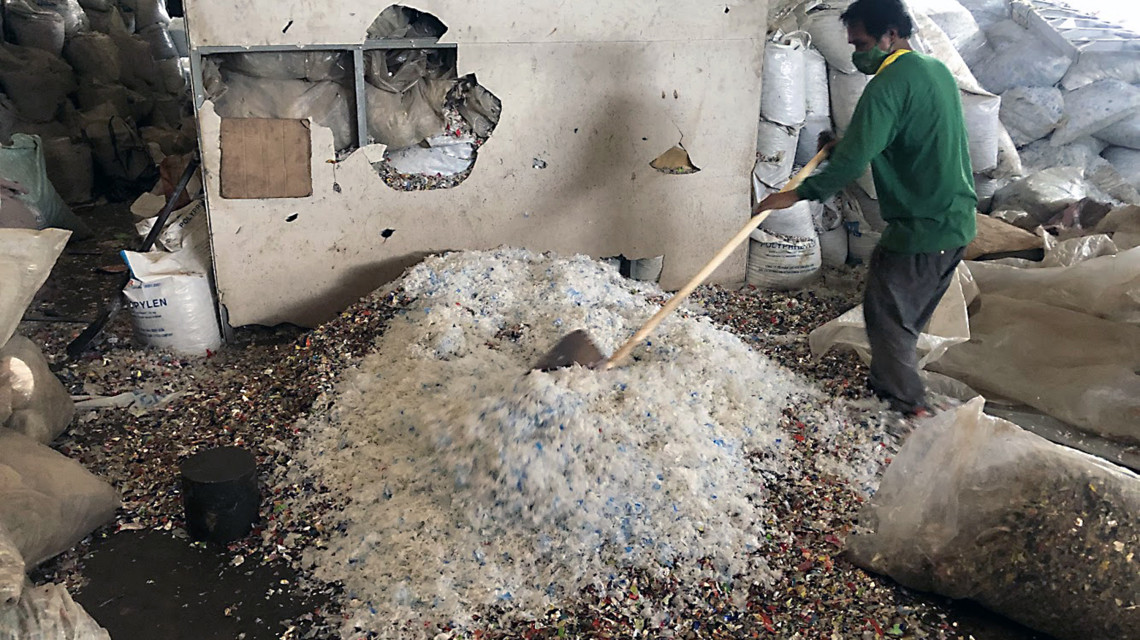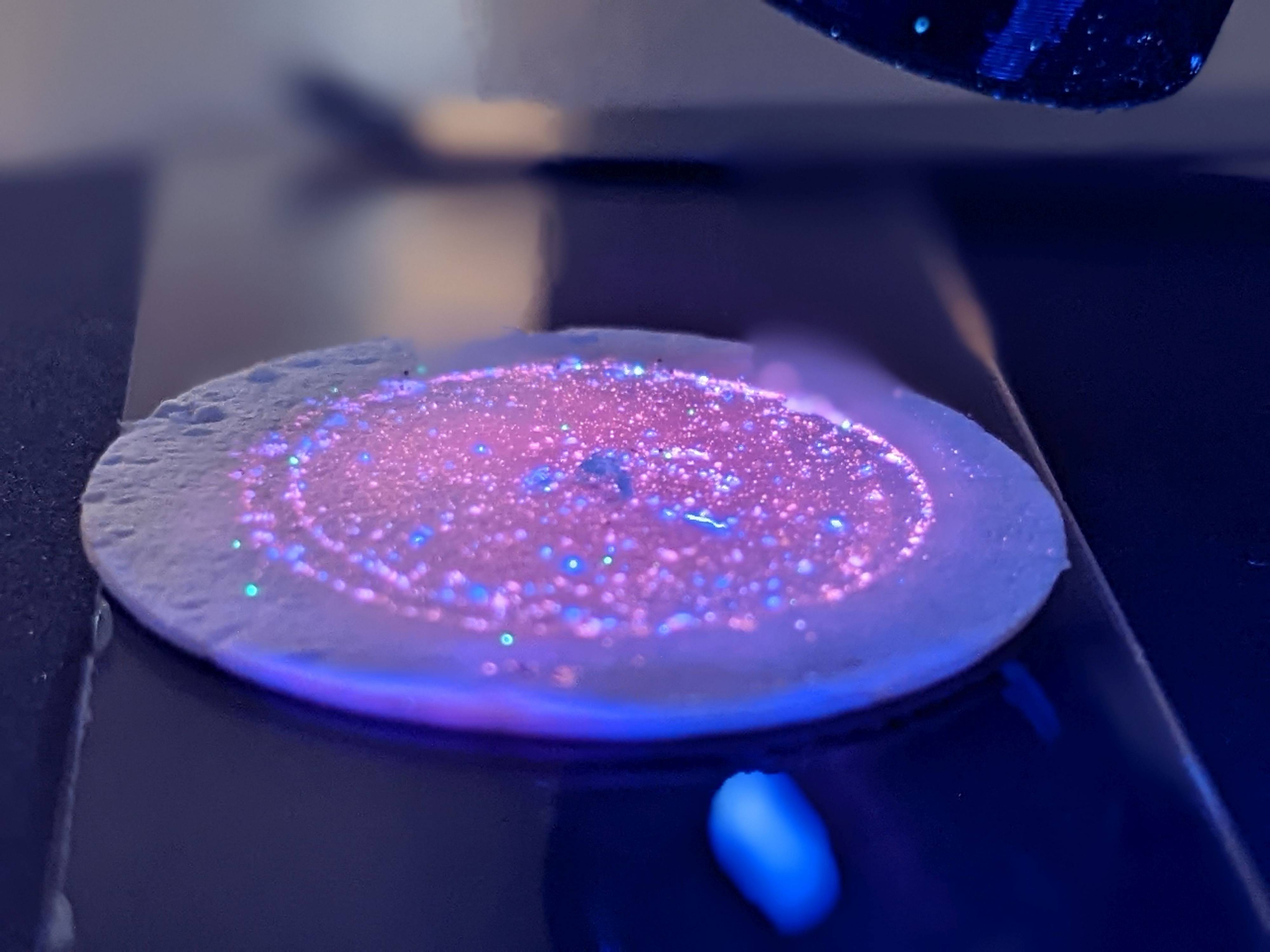By 2050, there may be more plastic in the ocean than fish. Radiation and nuclear technologies provide solutions to help return oceans to a healthy, thriving state, with experts developing innovative ways to recycle plastic waste and monitor plastic pollution in the ocean. The IAEA is advancing the application of these technologies worldwide through its NUTEC Plastics initiative. Three years after its launch, experts discussed the impact, progress, and the next steps of this IAEA flagship initiative at a side event held today at the IAEA's 67th General Conference.
"Plastic pollution is a growing problem: only nine per cent of this kind of waste is recycled or repurposed and ten million tonnes of plastics reach the oceans every year. We need innovative approaches," said Florence Descroix-Comanducci, Director of the IAEA Marine Environment Laboratories, who opened the event and then gave the floor to other speakers who discussed the two components of NUTEC Plastics: recycling and monitoring. Nuclear science and technology can play a key role on both fronts. Irradiation can be used to treat plastic waste, extending current recycling potential and enabling a wider and higher-value reuse. Nuclear science is also used to identify, trace and monitor plastics in the ocean, particularly microplastics.
Progress on recycling technologies under NUTEC Plastics

A recycling plant in Davao City, in the Philippines, is looking into the possibility of using irradiation to improve their recycling processes. With the help of the NUTEC Plastics, this research is being carried out in eight countries across Asia, Latin America, and Africa. (Photo: M. Gaspar/IAEA)
""Plastic pollution is also an economic issue - every year, the Philippines suffers from a loss of $790 million of potential market value because of it. To address it, we need to involve several parties. During the experimental phase of our scientific concept, we collaborated with the private sector, local public institutions, and the IAEA," explained Jordan Madrid, Head of the Chemistry Research Section of the Philippine Nuclear Research Institute and one of the speakers of the event. Now that the research phase has reached its final stage, experts would need to prove the economic feasibility of this technology, he added.
During the event, participants learned that almost 40 countries are currently working on developing recycling technologies under NUTEC Plastics.
NUTEC Plastics progress on marine monitoring

Participants during a training course on the monitoring of microplastics in the ocean collecting water samples in Santa Marta, Colombia. (Photo: INVEMAR)
"In the past, we used to monitor microplastics in 18 beaches in the Latin America and the Caribbean region. Today, we are monitoring 139 beaches and shorelines," reported Alejandro Garcia-Moya, Director General of the Centre of Environmental Studies in Cienfuegos, Cuba. "We owe this to the collaboration of more than 20 laboratories from different Latin American countries that work together under the IAEA's NUTEC Plastics initiative and under our regional scientific networks in the area, such as REMARCO."
During the event, participants learned that 63 countries are part of the monitoring component of NUTEC Plastics, which goal is to provide the world with the technology and know-how required to sample and analyze marine microplastics in the oceans.
It is expected that that national laboratories will form the international network of NUTEC Plastic Monitoring Laboratories to support the harmonization of sampling and analysis protocols and share their best practices.
Future research and way forward

Analysis of marine microplastic extracted from sediment using vibrational spectroscopy - a technology that is going to be further developed under an IAEA coordinated research project from 2023 to 2027. (Photo F. Oberhaensli/IAEA)
hanks to pledges reaching almost Є5 million from six IAEA Member States - Australia, Japan, the Republic of Korea, Sweden, the United Kingdom, and the United States of America - NUTEC Plastics is currently being mobilized to support 78 countries in solving their plastic pollution problems. Sustainable financing is a key accelerator for the NUTEC Plastics initiative, and the IAEA is focussed on forging new and diverse partnerships for funding.
New projects include additional coordinated research projects, for instance, on the use of biomass, a technical document (TECDOC) on protocols for the study of microplastics in sand beaches to be completed in 2024, and additional trainings and equipment transfer to Member States.
"Radiation technology can improve plastic recycling, and isotopic tracing techniques help monitor and analyse the behaviour and fate of microplastics in the seas and oceans. Through NUTEC Plastics, the IAEA will contribute to the global response to plastic pollution, and to a sustainable solution," said Hua Liu, IAEA Deputy Director General and Head of the Department of Technical Cooperation regarding the NUTEC Plastics initiative.






